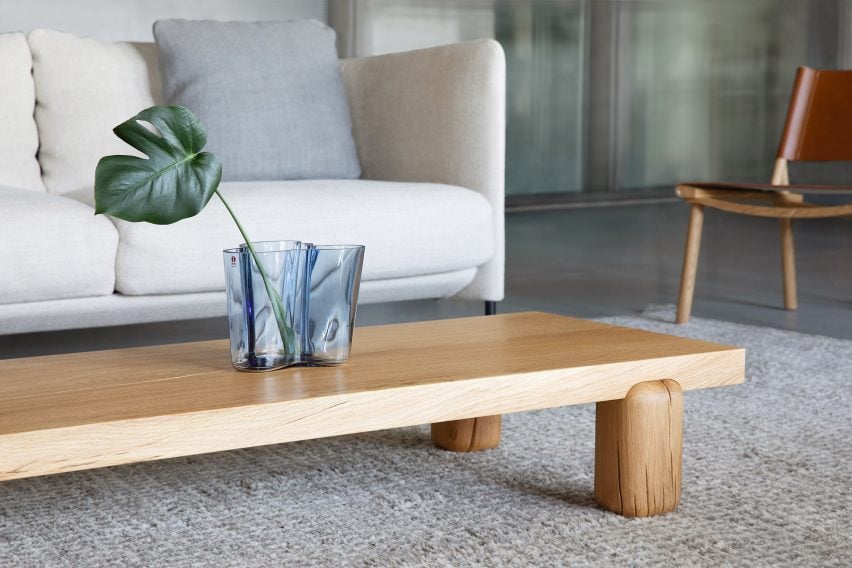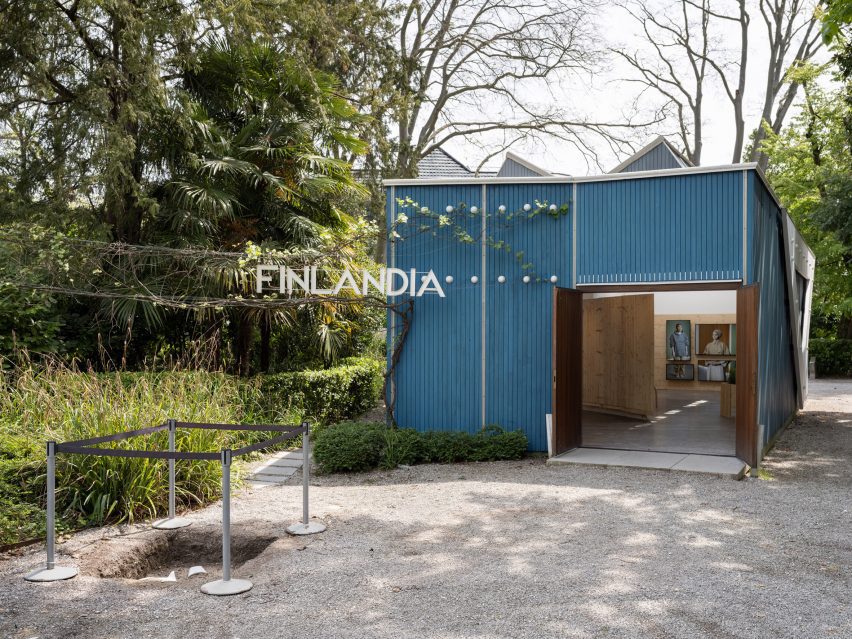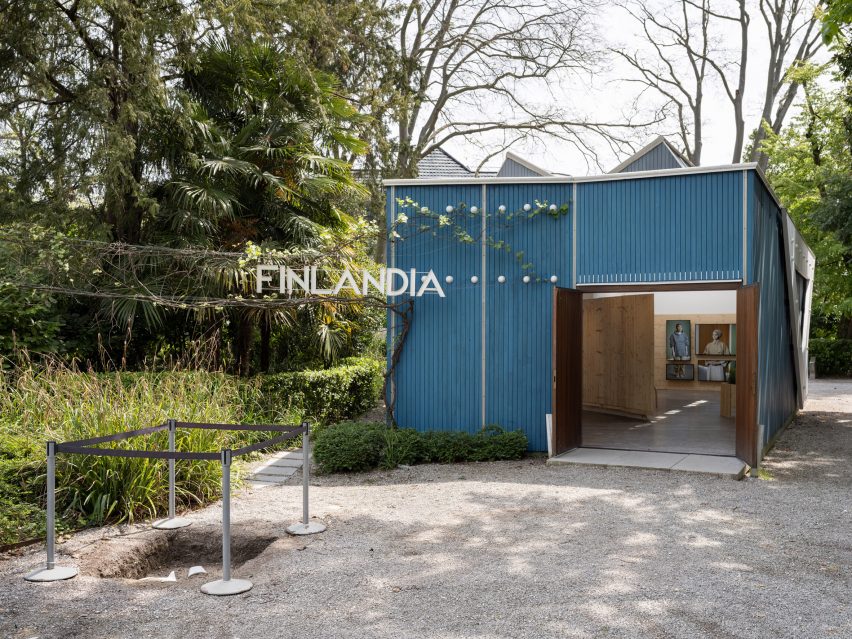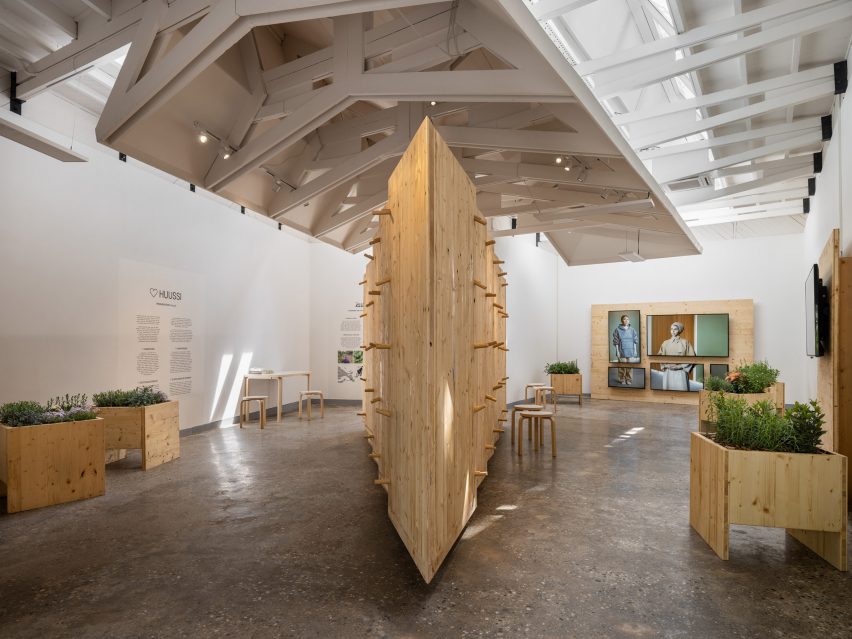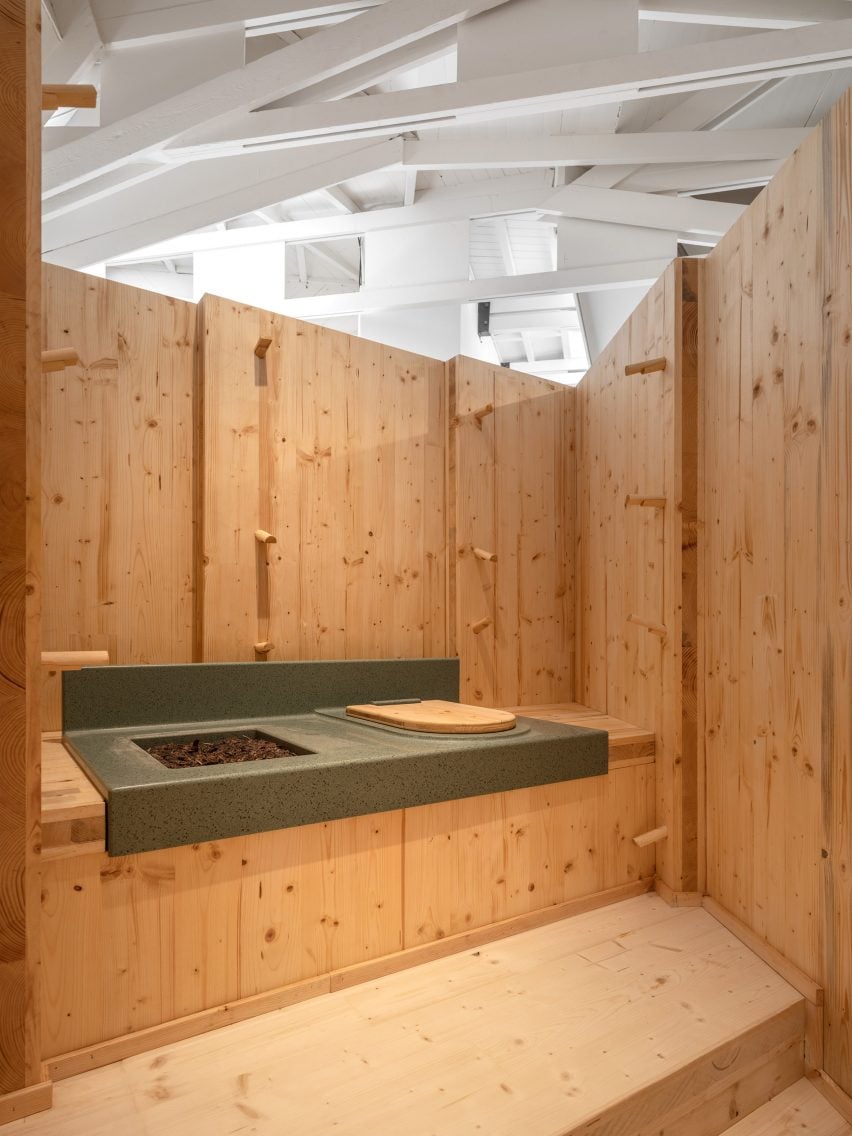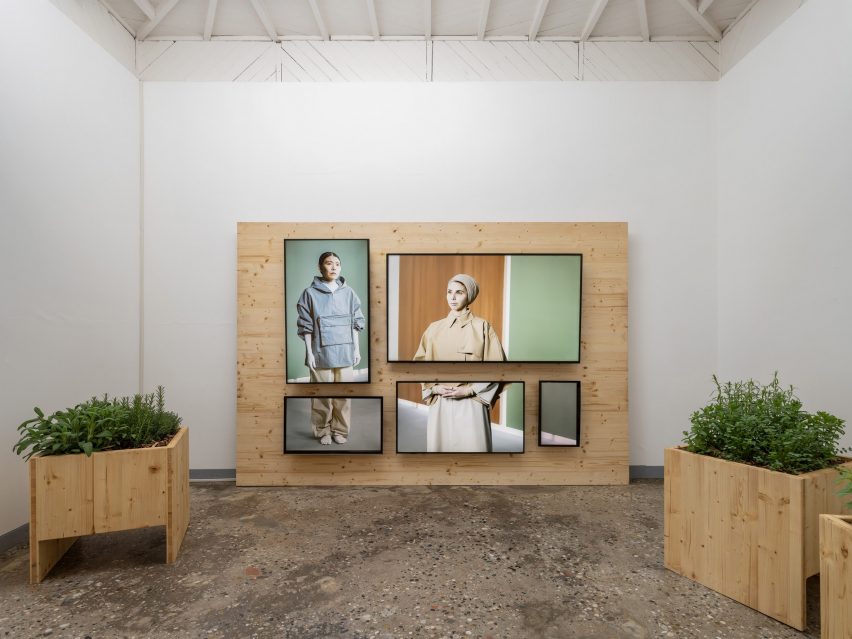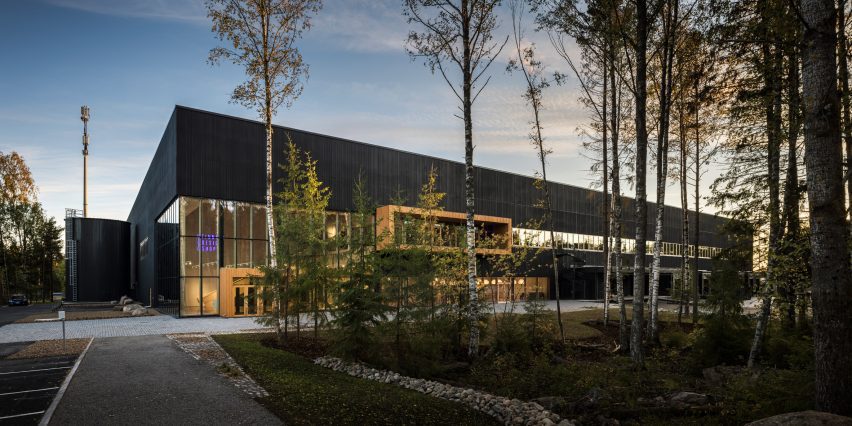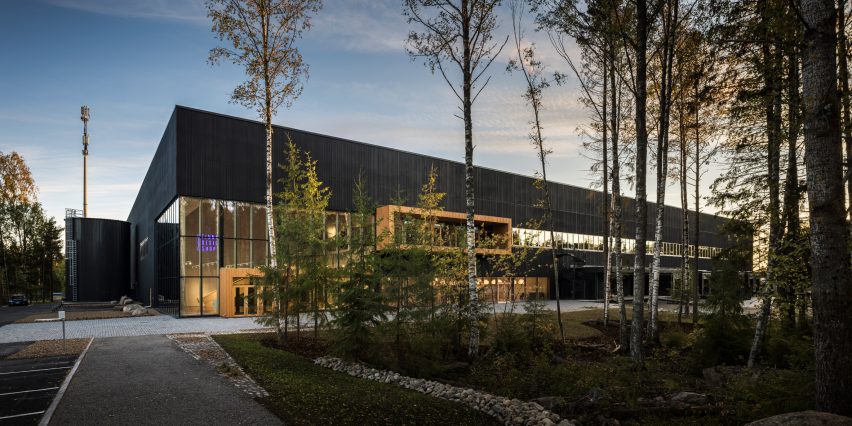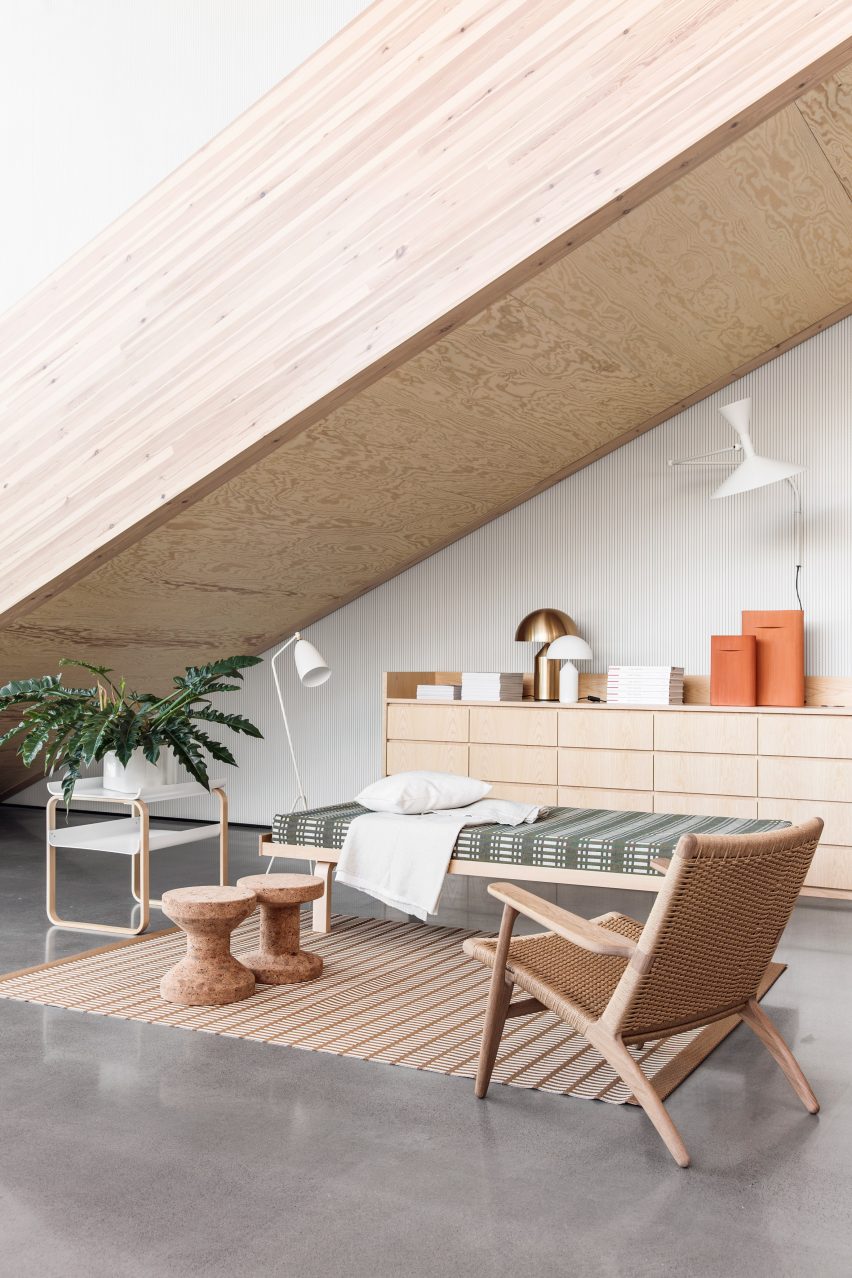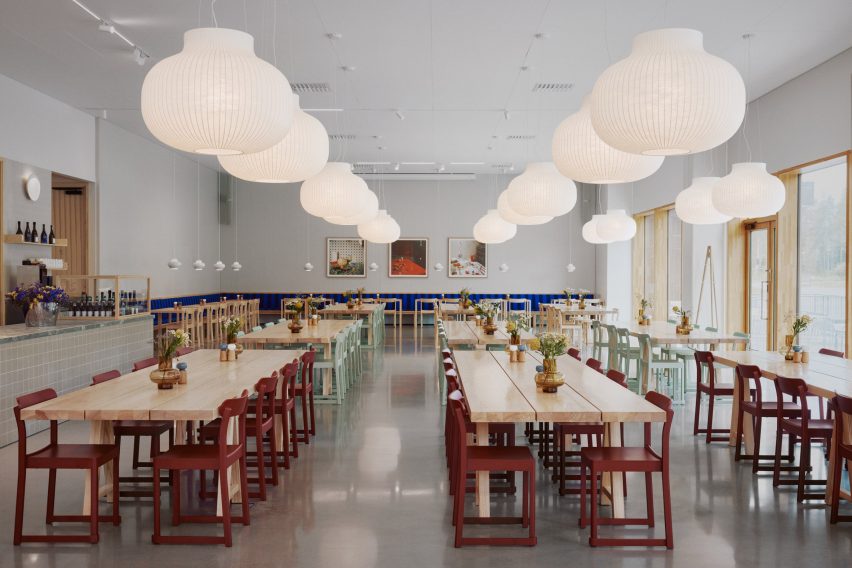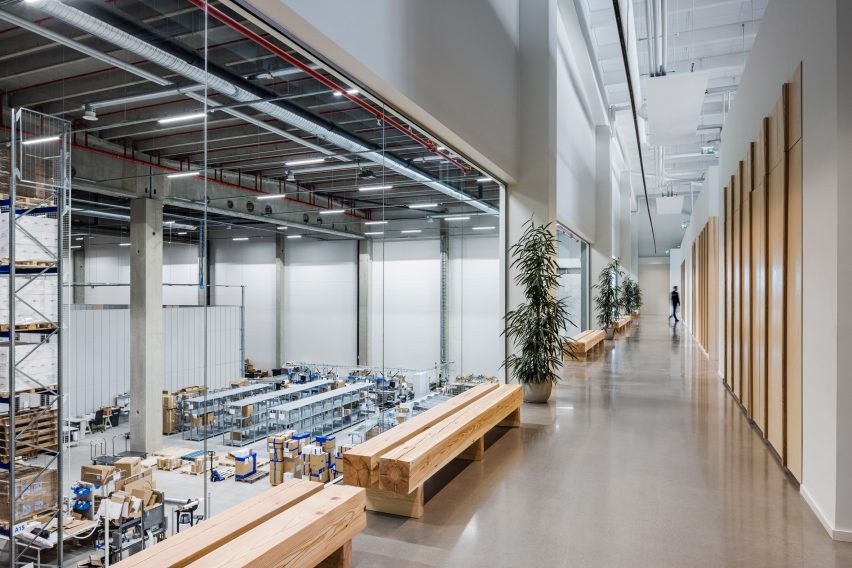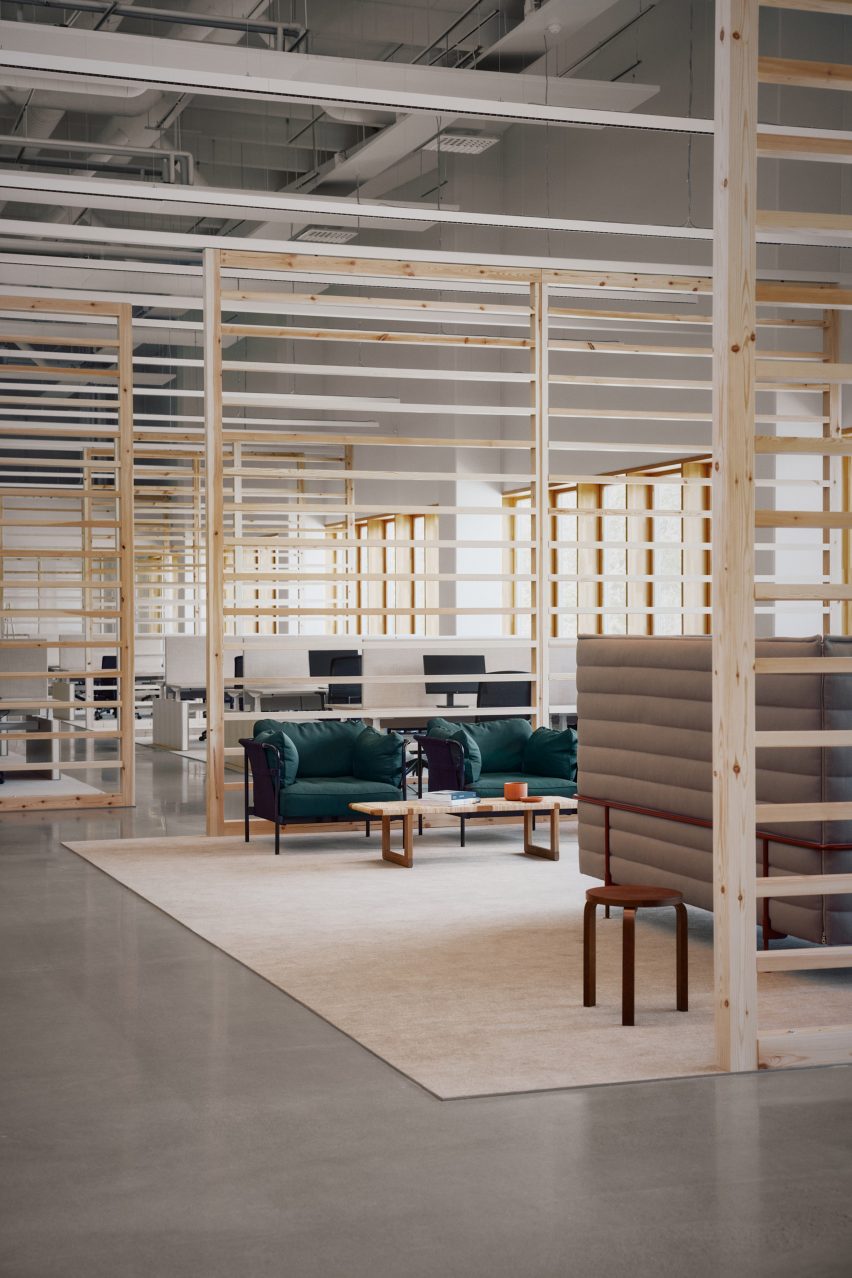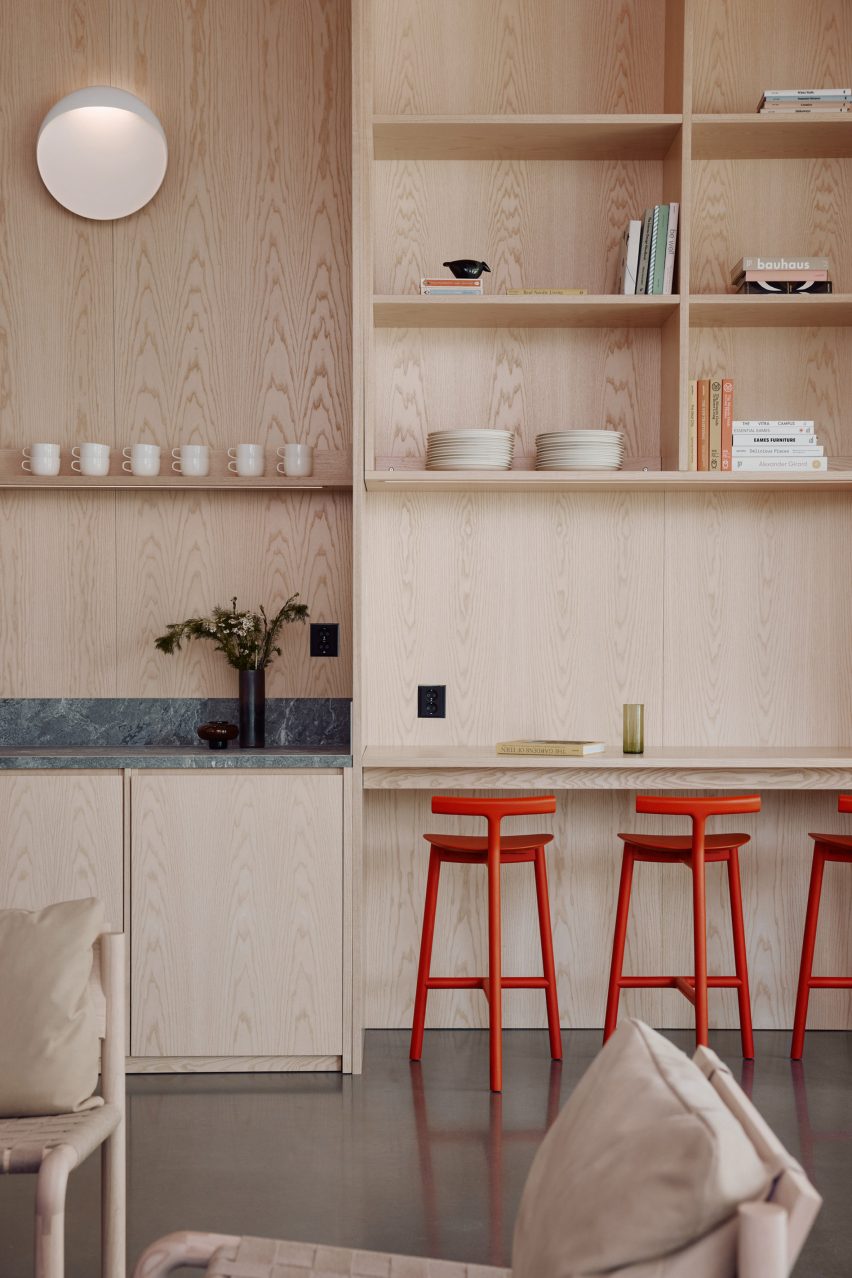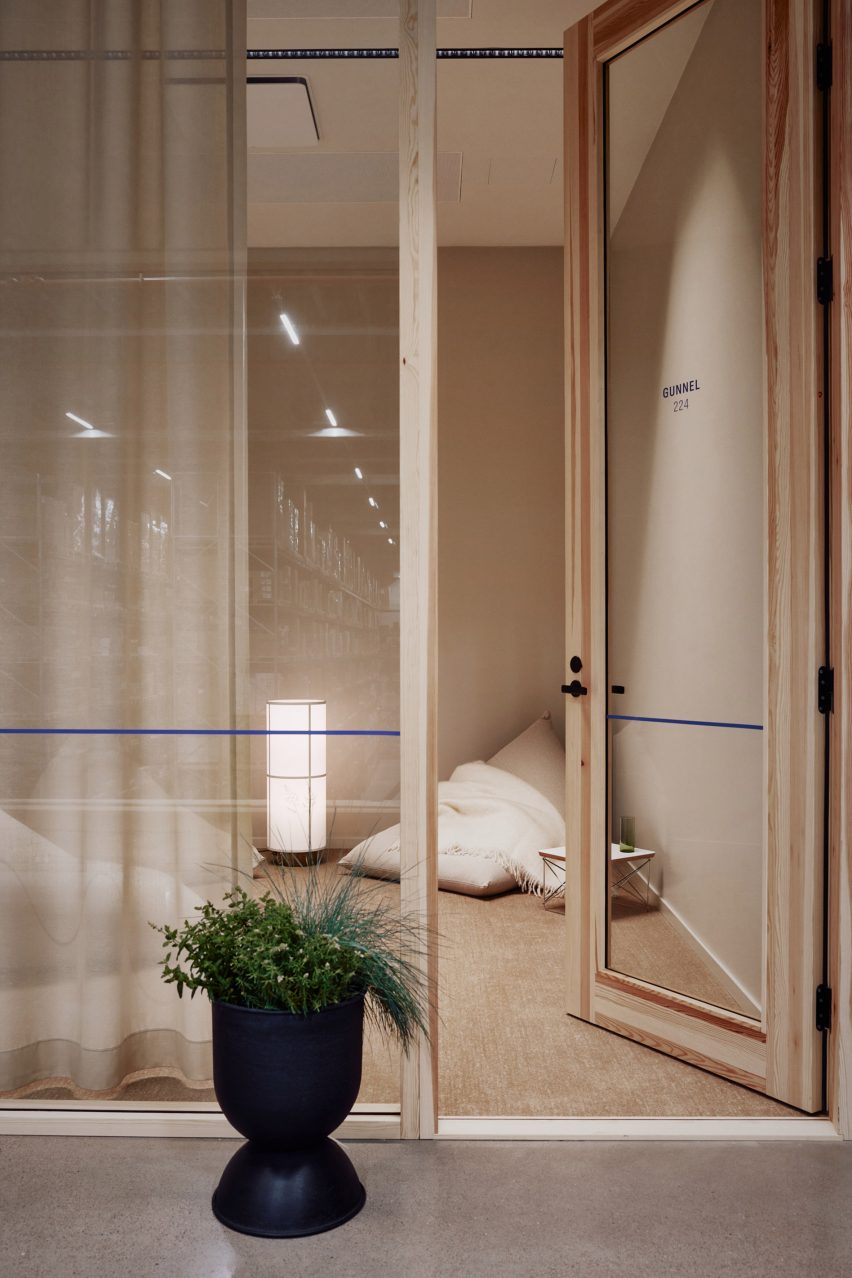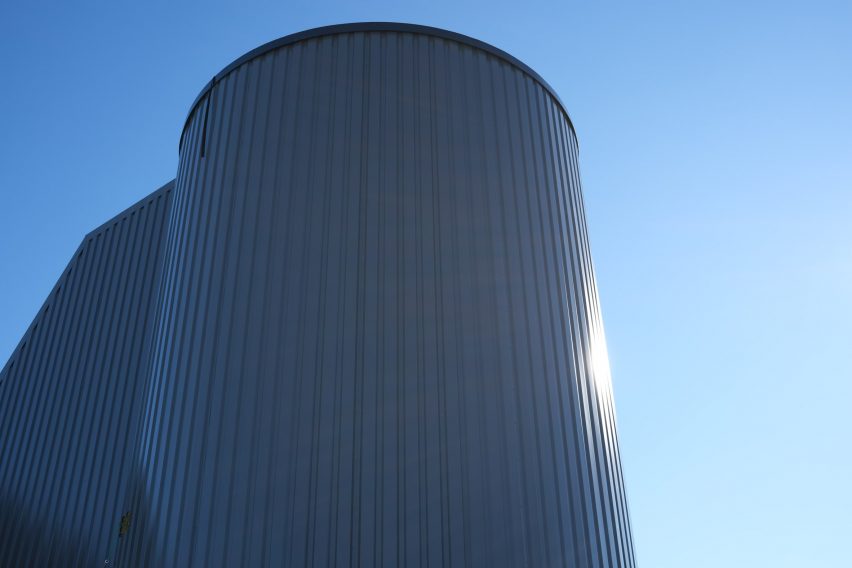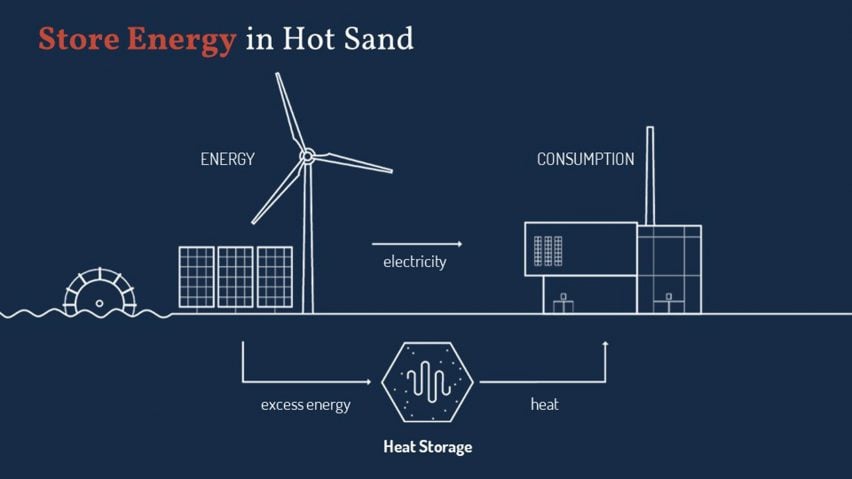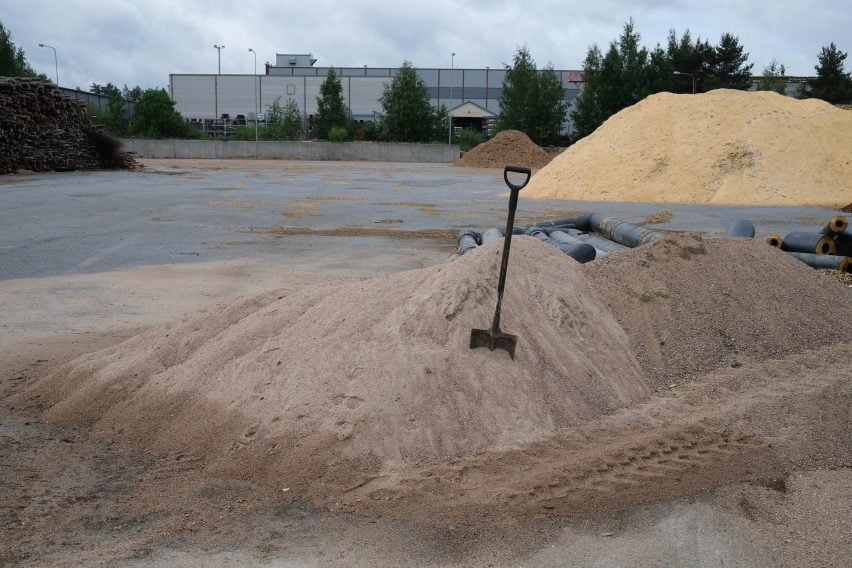Product Sustainability Framework launched by Finnish Design Shop
Retailer Finnish Design Shop has launched a tool to individually assess and rate the sustainability of more than 20,000 design products featured on its online store.
The retailer’s Product Sustainability Framework intends to support customers in making sustainable design purchases by scoring every item it sells according to a fixed set of criteria tailored specifically for design products.
Scores are determined through a survey directed towards the product manufacturers. The tool assesses five main categories: social responsibility, eco-friendly production, climate impact, sustainable materials, and circular design.
“Each category contains sustainability claims, for which the manufacturer can respond with either yes or no. In total, there are 69 claims,” Finnish Design Shop CEO Teemu Kiiski told Dezeen.
“Manufacturers answer each claim per product, and these claims are based on laws, international agreements, and initiatives.”
This often complex information is assessed and then rated. To make it understandable and comparable for customers, products are badged on the website with one, two or three green leaf symbols, representing good, very good or excellent.
A more detailed breakdown of the product’s score is included in the accompanying sustainability description.
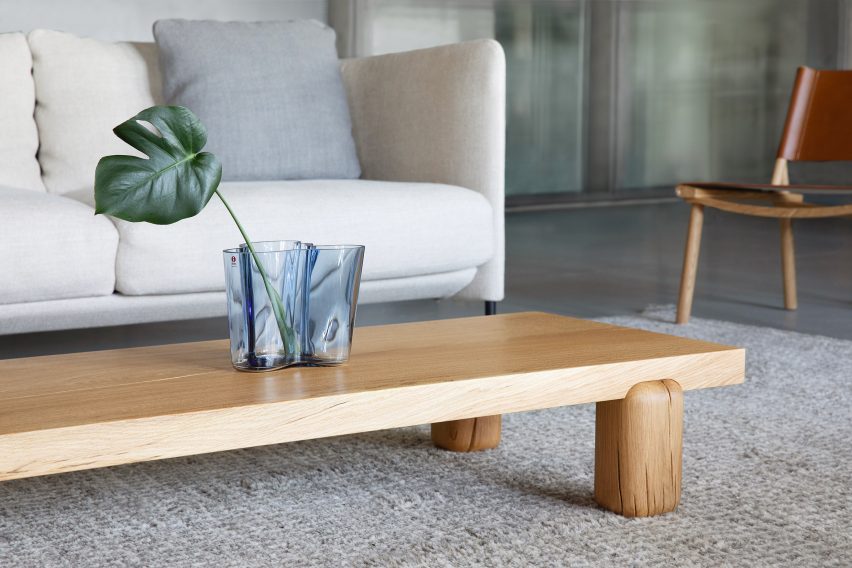
Explaining why the retailer launched this product-specific framework, Kiiski told Dezeen: “The first reason is the growing demand from customers and professionals for sustainability information regarding the design brands and products. This demand isn’t limited to Finnish Design Shop but extends to the entire design industry.”
“The second reason is that, as a retailer, we have limited means to influence the sustainability of the entire value chain of the products we sell,” he added.
“Through the framework, we can communicate our expectations for product sustainability to manufacturers and guide them towards enhanced sustainability. Simultaneously, we can establish a sustainability standard for the entire industry and lead the way in sustainability matters.”
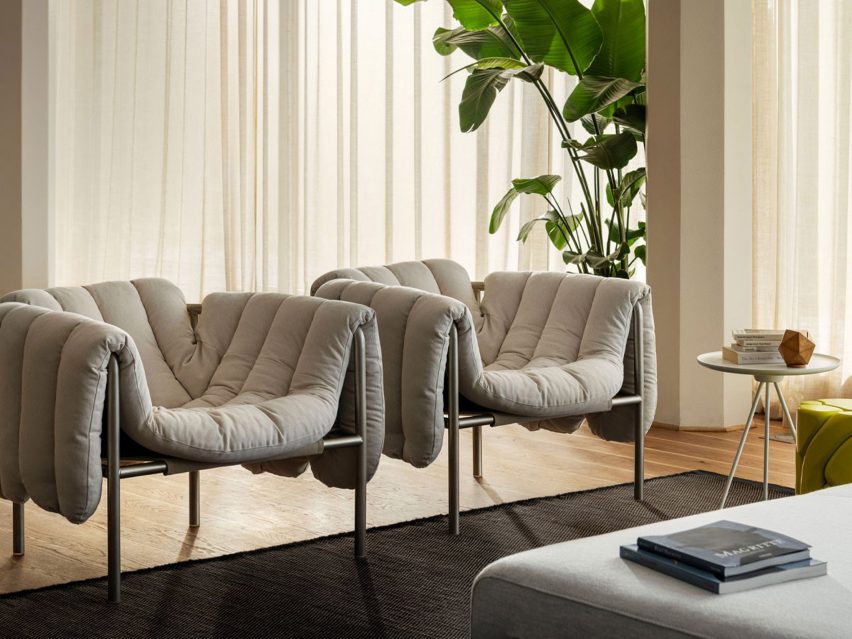
The specific criteria for each product were developed over two years with Ethica, a Finnish circular design expert partner. They rely on the accuracy of the data supplied by each of their suppliers. “We validate it based on our own data, expertise, and experience,” says Kiiski.
While Finnish Design Shop places a high trust in its suppliers to provide it with accurate information regarding their sustainability practices, it also conducts random spot checks.
“We require product manufacturers to be capable of substantiating the authenticity of each sustainability claim,” Kiiski said.
“We do not conduct audits, and this framework is not a standard, certification, or similar entity; rather, it represents our own criteria for sustainable design.”

Some of the 24,000 products on the Finnish Retail Shop website don’t have a rating, which means they haven’t yet been assessed or they do not meet sufficient sustainability standards.
Products that score poorly on the Product Sustainability Framework could eventually be removed from the portfolio.
“If some products or manufacturers do not meet our minimum sustainability criteria over time, we have the option to remove them from our selection,” Kiiski said.
However, the retailer believes this could also serve as an incentive.
“The PSF also serves as an incentive for further sustainability improvement, and we hope it signals to the whole industry that sustainability must be taken seriously, leaving no room for irresponsible actions anymore,” Kiiski added.
He is hopeful of the change that the Product Sustainability Framework will bring.
“The framework and its sustainability claims inform our suppliers about what can be expected from their sustainability practices today,” Kiiski said.
“Sustainability is a hot topic in our industry, but finding concrete data on it can still be a challenge,” he added. “The Product Sustainability Framework is our answer to this.”
“Essentially, it’s a 69-step list on how manufacturers can enhance their sustainability. The fact that over 110 manufacturers have participated so far indicates a need for concrete actions.”
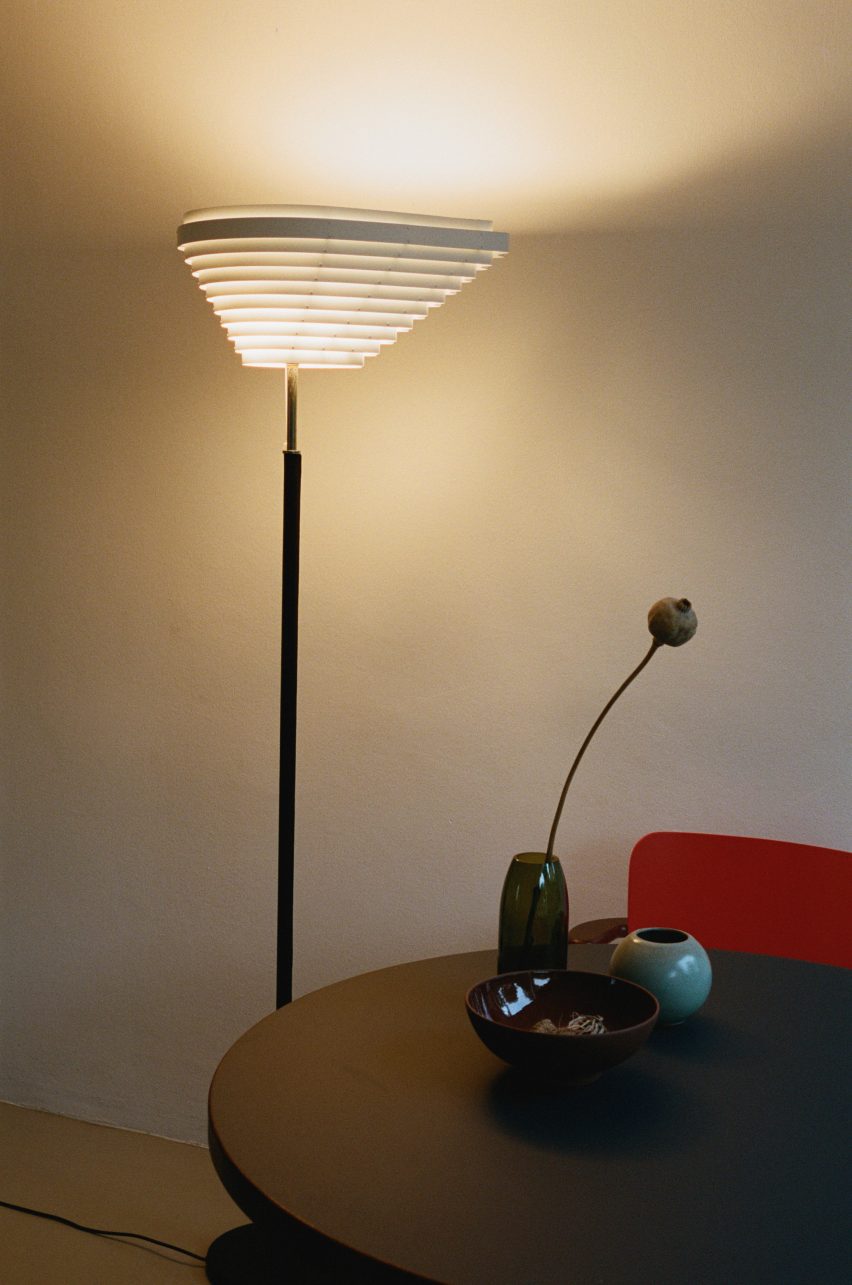
The Product Sustainability Framework is part of Finnish Design Shop’s sustainability strategy. Launched during Helsinki Design Week in September 2023, visitors had the opportunity to explore an installation explaining the framework (pictured, top) and its criteria through five sample products.
Last year, the retailer unveiled a logistics centre in a forest that was designed to enable “a more sustainable future”. It has previously provided the furniture for a pop-up restaurant in New York made from recycled packaging.
The photography is courtesy of the products’ manufacturers. Main image courtesy of Finnish Design Shop.

